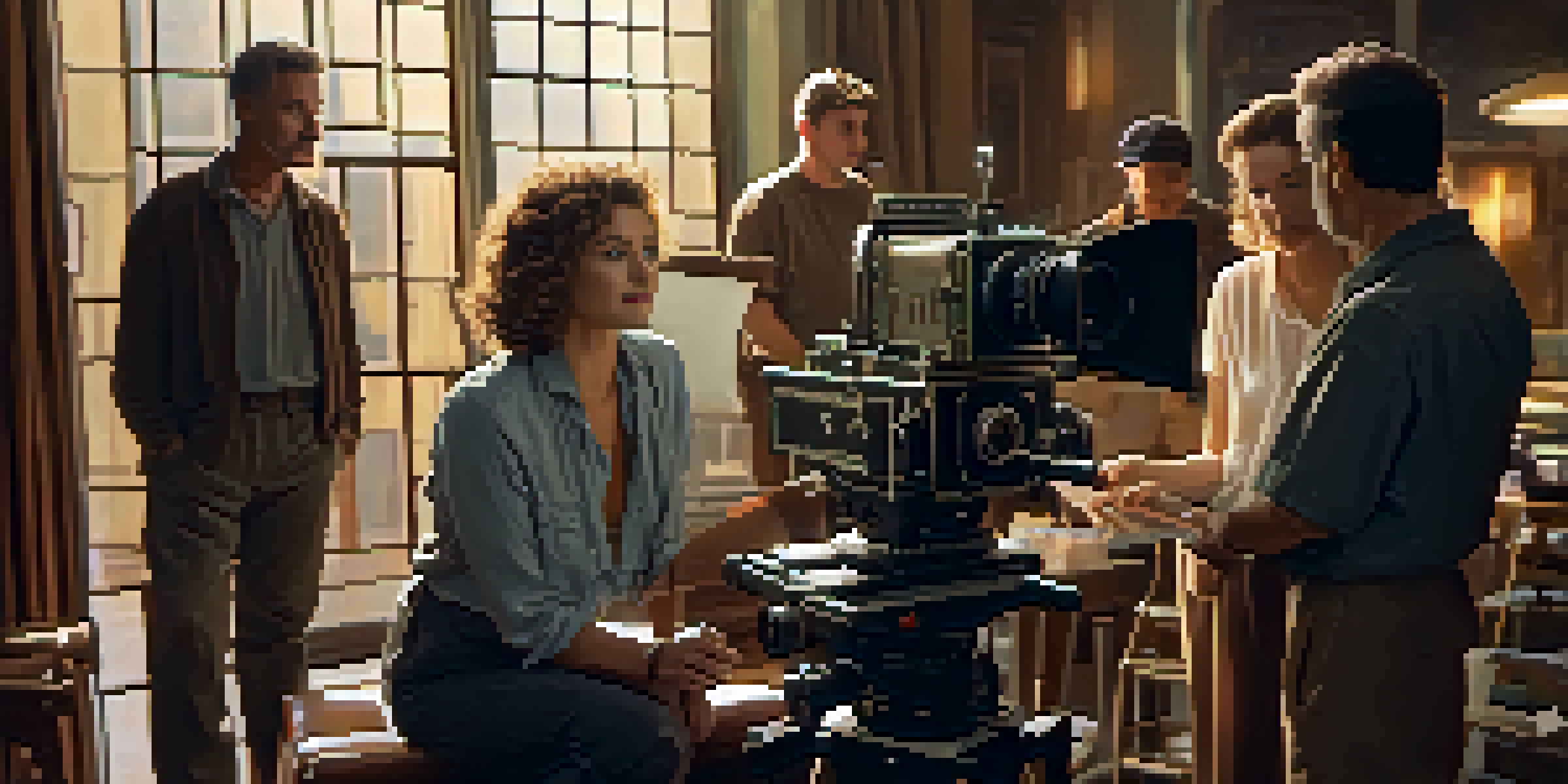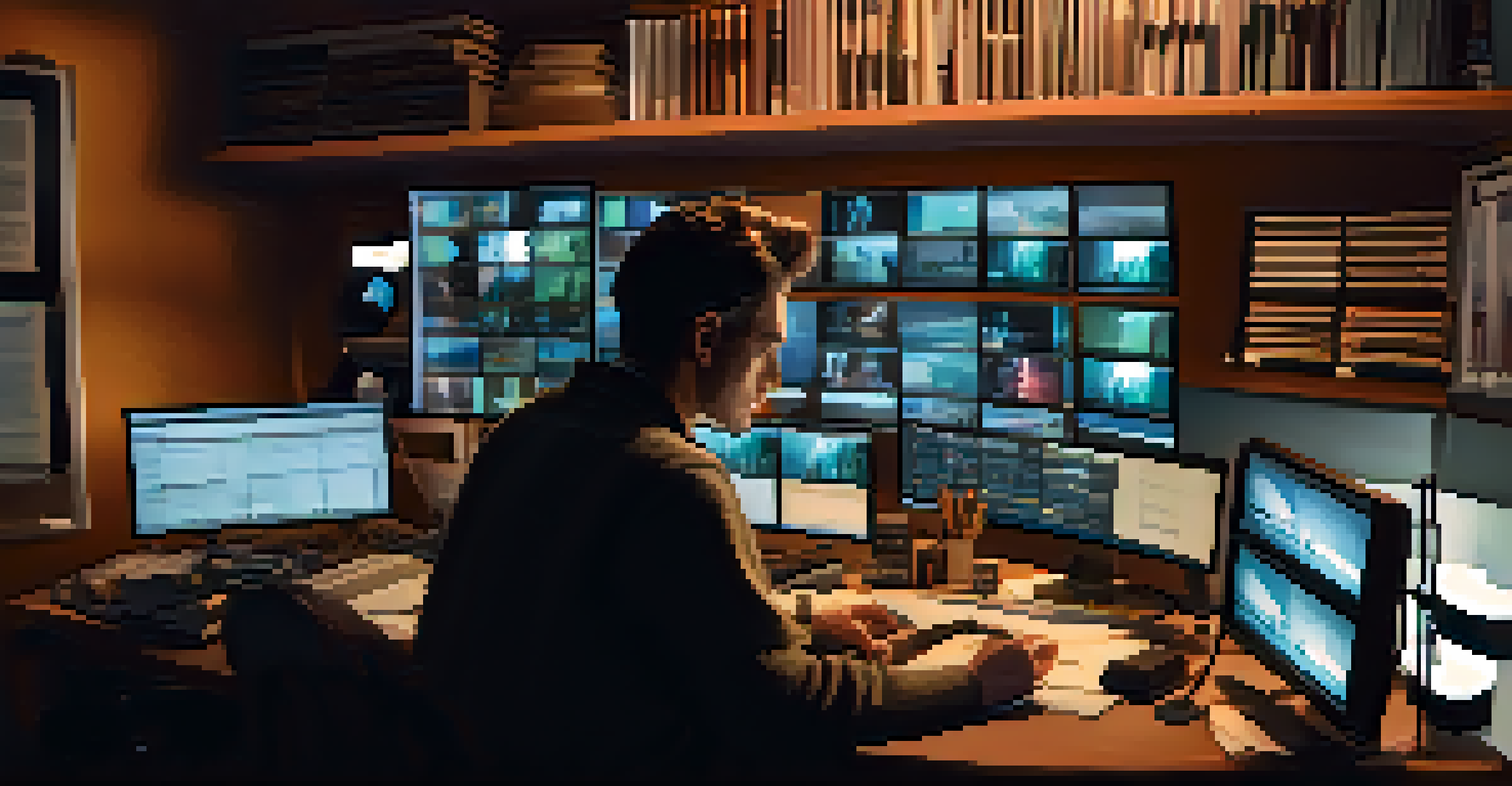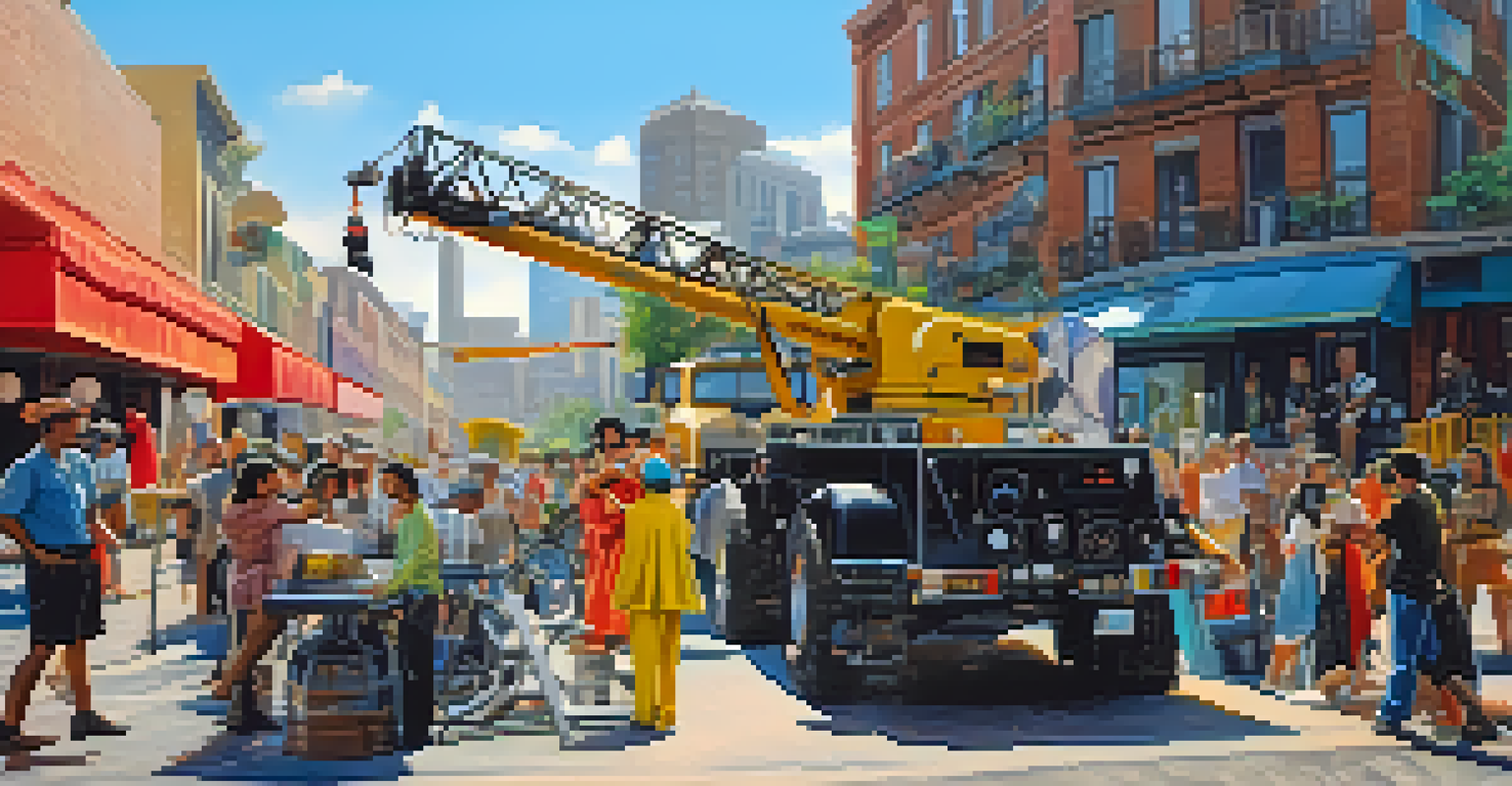The Impact of Filmmaking Techniques on Film Criticism Insights

Understanding Filmmaking Techniques and Their Role
Filmmaking techniques encompass a range of methods used by directors and cinematographers, including camera angles, lighting, and editing styles. These techniques are crucial as they shape the narrative and emotional tone of a film, influencing how the audience perceives the story. For instance, a close-up shot can create intimacy with a character, making their emotions more palpable.
Film is a powerful means of communication, and its techniques can evoke emotions in a way that words alone cannot.
When critics analyze a film, they often consider these techniques as integral components of the storytelling process. They look for how effectively these methods enhance the plot or deepen character development. A well-executed technique can elevate a mediocre script, making it more engaging and impactful.
Ultimately, understanding these techniques not only enriches the viewer's experience but also provides critics with a framework for their evaluations. By recognizing the artistry behind each decision, critics can offer more nuanced insights into a film's success or failure.
The Relationship Between Technique and Narrative
Filmmaking techniques are tightly woven into the fabric of a film's narrative. For example, the use of non-linear editing can create suspense and intrigue, leading to a more engaging story. This technique encourages viewers to piece together the plot, making them active participants in the storytelling process.

Critics often highlight how a film's structure, influenced by its editing technique, affects audience interpretation. If a film employs flashbacks or shifts in perspective, it may challenge viewers to rethink their understanding of the storyline. This complexity can lead to richer discussions among critics and audiences alike.
Techniques Shape Film Narratives
Filmmaking techniques like editing and cinematography are crucial for enhancing storytelling and emotional engagement.
Thus, the interplay between technique and narrative is vital for both filmmakers and critics. It shapes not only the story being told but also how that story resonates with its viewers, ultimately influencing critical reception.
Visual Storytelling: The Power of Cinematography
Cinematography involves the art of capturing images on film, and it plays a significant role in storytelling. Techniques such as lighting, color grading, and camera movement can profoundly impact the viewer's emotional response. For instance, a dark, desaturated color palette may evoke feelings of sadness or dread.
Cinematography is infinite in its possibilities... much more so than music or language.
Film critics often analyze cinematographic choices to understand how they contribute to a film’s atmosphere. A well-lit scene can enhance the emotional weight of a moment, while shaky cam techniques may create a sense of urgency or chaos. These visual elements add layers of meaning that critics are keen to explore.
In this way, cinematography is not just about aesthetics; it’s a crucial storytelling tool that influences both filmmakers' intentions and critics' interpretations. Recognizing this connection allows for a deeper appreciation of a film's artistic vision.
Sound Design: An Underappreciated Technique
Sound design is often overlooked in discussions about filmmaking techniques, yet it plays a pivotal role in shaping a film's emotional landscape. From background scores to sound effects, audio elements can amplify tension, evoke nostalgia, or enhance realism. For example, the eerie silence before a jump scare can heighten suspense immensely.
Critics frequently delve into how sound design complements visual storytelling, creating a holistic viewing experience. A powerful score can leave a lasting impression, influencing how audiences feel about a film long after it ends. This synergy between sound and image is essential for critics to address in their analyses.
Sound Design Enhances Experience
Sound design plays a pivotal role in shaping a film's emotional landscape, often amplifying tension and evoking specific feelings.
Ultimately, recognizing the importance of sound design enriches the critical conversation around films. It highlights that every element contributes to the overall narrative, making sound an integral part of filmmaking techniques.
Editing Techniques: Shaping Pace and Emotion
Editing is the process of selecting and combining shots to create a cohesive story, and it significantly affects a film's pacing and emotional impact. Techniques like jump cuts can create a sense of urgency, while slow fades can evoke reflection and contemplation. The rhythm of editing can manipulate viewers' emotions, keeping them engaged or allowing them to breathe.
Film critics often scrutinize editing choices to understand how they influence storytelling. A rapid sequence of cuts may build tension, while longer takes can immerse an audience in a character's experience. This awareness allows critics to articulate how editing shapes the viewer's journey through the narrative.
By examining editing techniques, critics can offer insights into a film's effectiveness. They can highlight how well these choices serve the story, ultimately enriching the audience's understanding of the film.
Genre-Specific Techniques and Their Critique
Different genres often employ unique filmmaking techniques to convey specific themes and emotions. For instance, horror films may rely heavily on suspenseful music and jump scares, while romantic comedies often utilize bright lighting and upbeat soundtracks to evoke cheerfulness. These techniques help establish the tone and expectations of each genre.
Critics frequently analyze how well a film adheres to or subverts genre conventions through its techniques. A horror film that relies more on psychological tension rather than jump scares can be seen as innovative or refreshing. This scrutiny helps audiences appreciate the creativity involved in genre filmmaking.
Cultural Context Influences Techniques
Filmmaking techniques reflect societal values and cultural contexts, providing critical insights into the themes and issues of the time.
Understanding genre-specific techniques allows critics to provide more informed perspectives. It encourages discussions about originality and the evolution of film as artists explore new ways to engage audiences.
Cultural Context: Techniques Reflecting Societal Values
Filmmaking techniques often reflect the cultural and societal values of their time, influencing both the creation and critique of films. For example, the rise of handheld camera work in independent films signifies a movement towards realism and authenticity, resonating with contemporary audiences. This shift in technique can speak volumes about societal changes and artistic trends.
Critics examine these cultural contexts to understand how techniques serve as commentary on the issues of the day. A film that uses stark lighting to illustrate socio-economic disparity may provoke thoughtful discussions on social justice. Such insights deepen the critical narrative surrounding a film.

By acknowledging the cultural significance of filmmaking techniques, critics play an essential role in contextualizing films within broader societal conversations. This awareness enriches the dialogue about art and its impact on society.
The Future of Filmmaking Techniques and Criticism
As technology evolves, so do filmmaking techniques, leading to new possibilities in storytelling and criticism. Advances in virtual reality, for example, are reshaping how stories are told and experienced, pushing the boundaries of traditional narratives. Critics will need to adapt their frameworks to evaluate these emerging methods effectively.
The relationship between filmmakers and critics will continue to evolve, with new techniques inviting fresh perspectives and interpretations. As audiences become more savvy and discerning, critics will play a vital role in navigating these changes. They will help audiences appreciate the artistry behind innovative storytelling.
In summary, the future of filmmaking techniques promises exciting developments that will challenge both creators and critics. As they explore new frontiers together, the impact of these techniques on film criticism will remain profound and essential.